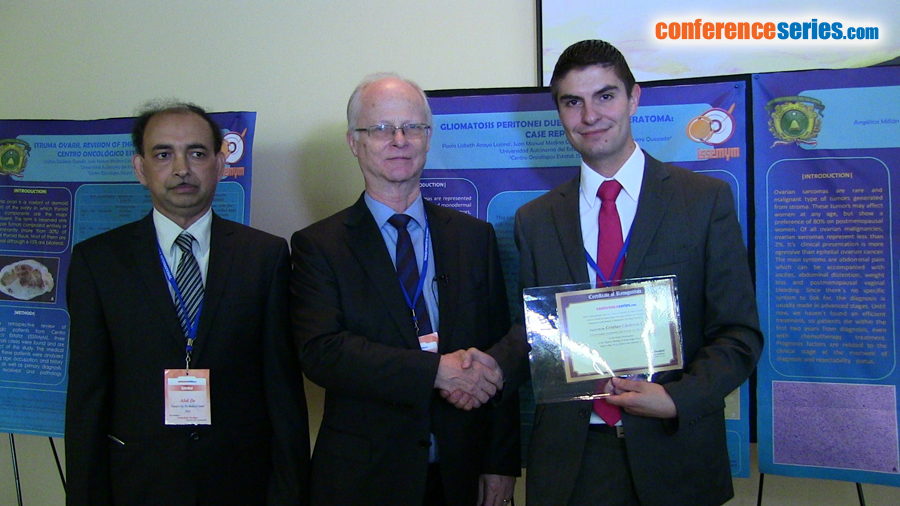
Karl R Aigner
Medias Klinikum GmbH & Co KG, Germany
Title: Platin-refractory recurrent FIGO stage IIIc and IV ovarian cancer responds to high exposure isolated abdominal perfusion with chemofiltration
Biography
Biography: Karl R Aigner
Abstract
Introduction: Recurrent metastatic ovarian cancer treated with extended cytoreduction and combination-chemotherapy based on platinum compounds relapses within two years in almost half of the patients who responded to initial treatment. The likelihood of a second response to platinum-based chemotherapy after a recurrence is closely correlated with the recurrence-free interval. The shorter the time interval is to tumor progression, the less likely are the chances of a response to further chemotherapy. Material & Methods: The patients included in this study were mainly at FIGO stage IIIc (71%) and FIGO IV (25%). 87.5% had a four-quadrant peritoneal carcinosis and 39% (n=31) showed a histologic grade of G3 malignancy. 79% of all patients were heavily pre-treated; 6 of them had already undergone third-line and one patient fourth-line therapies. Four cycles of isolated hypoxic abdominal perfusion with Cisplatin, Adriamycin and Mitomycin were conducted at four weekly intervals. After insertion of a venous and arterial 21 Ch. stopflow-catheter via a femoral access, the vena cava was blocked beneath the right atrium, the arterial catheter was blocked above the celiac axis in the aorta. Both thighs were blocked by pneumatic cuffs. Chemotherapy in a 70 kg patient consisted of 50 mg Cisplatinum, 30 mg Adriamycin and 20 mg Mitomycin. The agents were administered as a bolus via the aorta at the level of the diaphragm followed by 15 minutes of hypoxic abdominal perfusion via an external pump and subsequent chemofiltration for 45 minutes. Adriamycin and Mitomycin were used because of their up to tenfold increased cytotoxicity under hypoxic conditions. The procedure was done under general anesthesia. Primary endpoint of the study was overall survival and secondary endpoint was control of the ascites and quality of life. Results: Clinical and histological complete remissions were 25% and 13% respectively, partial remissions 39% and 35% respectively, resulting in an overall clinical response rate of 64% and histological response rate of 48%. Complete remission of ascites within two cycles was noted in 43% and substantial reduction of ascites in 19%, totally 62%. Median progression-free survival was 8 months and median overall survival 14 months. 74%, which is three out of four patients, reported a definite decrease in abdominal symptoms and clear improvement in their pain situation. Eight patients survived between 6 and 18 years, of four patients who have currently survived between 11 and 19 years, three of them originally had G3 tumors. Toxicity & Side-effects: Chemofiltration bone-marrow toxicity ranged between WHO grade 1 and 2 and in patients with previous third- or fourth-line chemotherapy it was WHO grade 3. The predominant clinical symptom in patients with posttherapeutic tumor necrosis (15 - 20% of all patients) was fever and fatigue. Conclusion: Isolated hypoxic abdominal perfusion with subsequent chemofiltration in platin-refractory recurrent FIGO IIIc and IV ovarian cancer is a valuable option to break through chemoresistence and improve quality of life due to reduction or resolution of malignant ascites.





